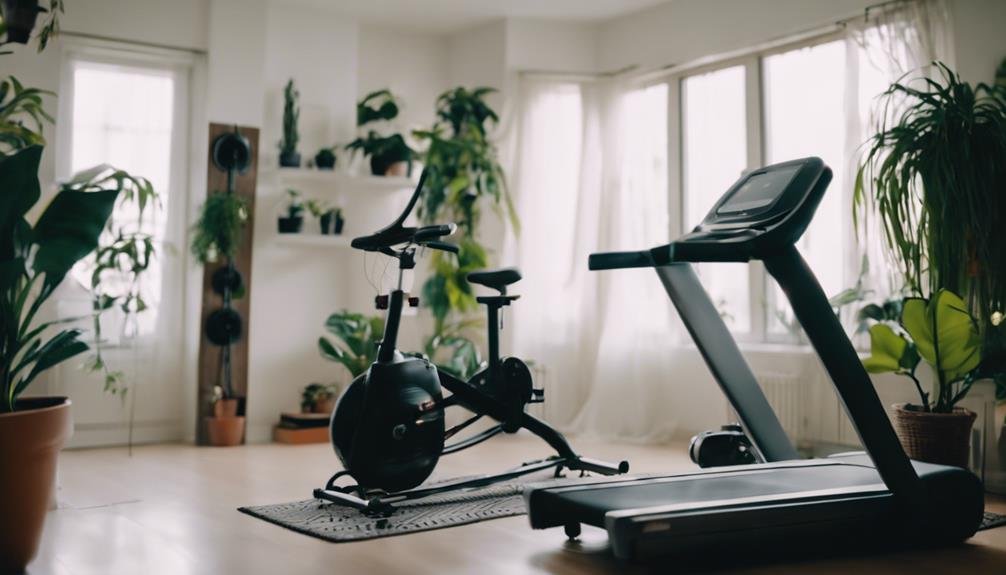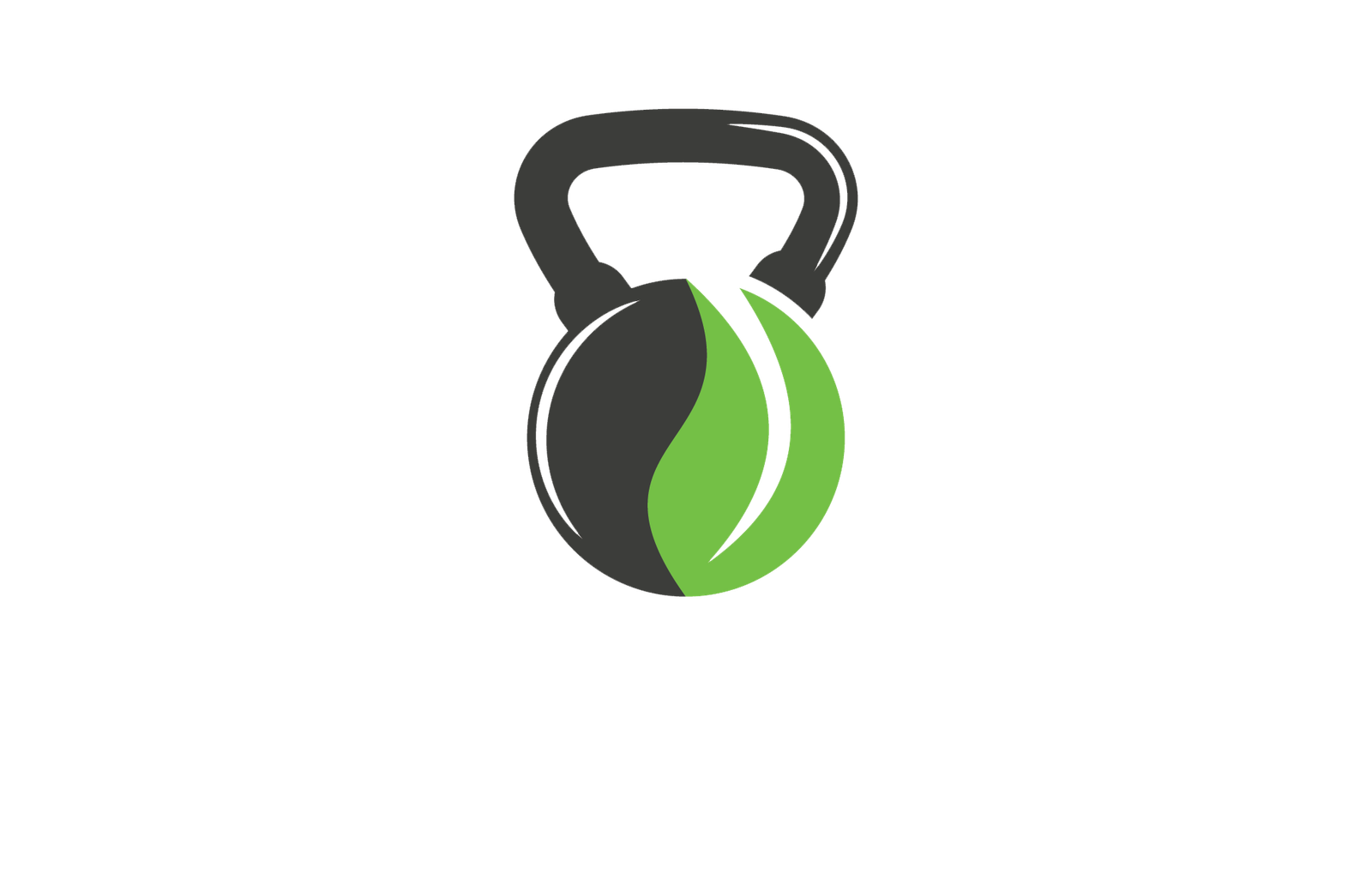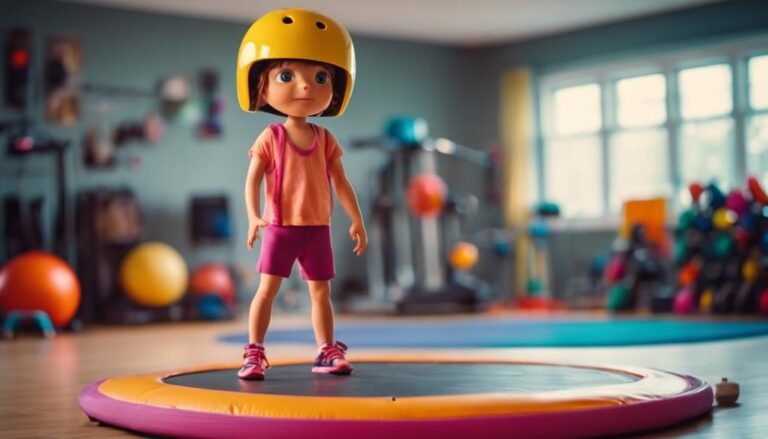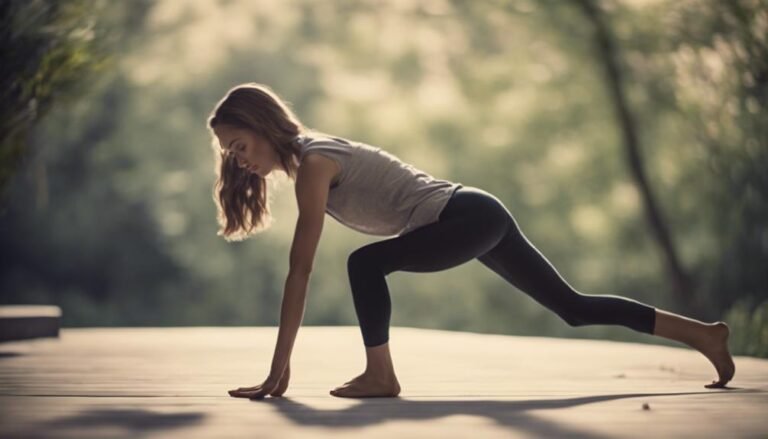Don't miss our holiday offer - 20% OFF!

Budget Home Gym Design: Setting Up Without Breaking the Bank
Fit your fitness goals into your budget with these savvy strategies for designing a functional home gym without emptying your wallet.
We're setting up a home gym without breaking the bank! First, we assess our fitness needs and preferences to determine the right equipment and layout. We can repurpose household items, like water bottles and PVC pipes, to create functional workout tools. Space-saving design strategies, like compact shelves and wall-mounted storage, help maximize our space. We opt for affordable flooring options, like rubber flooring, which provides a soft, shock-absorbing surface. By getting creative and strategic, we can create a functional and effective home gym on a budget. Now, let's get started and transform our space into a fitness haven!
Key Takeaways
- Identify fitness goals and preferences to determine the most essential equipment and space requirements for a budget-friendly home gym.
- Repurpose everyday objects or DIY equipment, such as PVC pipes or water bottles, to save money on workout tools.
- Opt for compact and multi-functional equipment, and utilize space-saving storage solutions to maximize floor space.
- Create zones for strength training, cardio, and other activities to optimize workout time and energy without overspending.
- Choose budget-friendly flooring options, such as rubber flooring or interlocking tiles, which are easy to clean, maintain, and install.
Assessing Your Fitness Needs
As we set out on creating our budget home gym, we must first identify our fitness goals and needs to guarantee our space is tailored to helping us achieve them. What are our fitness goals? Are we looking to build strength, increase endurance, or improve flexibility? Do we want to focus on cardio, weightlifting, or a combination of both? Knowing our fitness goals will guide our decisions on the type of equipment we need and how we'll use the space.
Next, we need to examine our workout style. Are we morning exercisers or do we prefer evening workouts? Do we like to work out in solitude or with a buddy? Will we be doing high-impact exercises or low-impact ones? Examining our workout style will help us determine the layout and ambiance of our home gym. By understanding our fitness goals and workout style, we can design a space that meets our specific needs, making it more likely that we'll stick to our fitness routine and achieve our goals.
Repurposing Household Items
As we set up our home gym, we're not just limited to buying new equipment. We can get creative and repurpose items we already have at home to save money and space. By thinking outside the box, we can turn household items into effective workout tools, and we'll explore some of our favorite DIY equipment alternatives and hacks in the following sections.
DIY Equipment Alternatives
We repurpose household items to create DIY equipment alternatives that save us money and space. By getting creative, we can transform everyday objects into functional workout tools. For instance, we use PVC pipes to create our own pull-up bars or homemade dumbbells. This not only reduces waste but also adds a personal touch to our home gym.
Old machinery, like an old bicycle or stationary bike, can be repurposed as a leg press or cardio machine. We simply attach resistance bands or weights to create a customized workout experience. This approach allows us to target specific muscle groups without breaking the bank.
Household Item Hacks
By repurposing everyday objects, we can create a versatile home gym that's both functional and cost-effective, and one of the most creative ways to do this is by hacking household items into workout tools. This approach turns our homes into a Hacker's Paradise, where we can get creative and resourceful with the items we already have.
For instance, we can repurpose old water bottles as dumbbells or use a resistance band attached to a door to create a makeshift cable machine. Even a sturdy chair can become a bench for step-ups or tricep dips. By thinking outside the box, we can turn our living rooms into a functional gym, sans the hefty price tag. And the best part? We get to enjoy the satisfaction of upcycling and giving new life to items that would otherwise gather dust. This Repurposed Decor not only saves us money but also adds a touch of personality to our workout space. With a little creativity, we can transform our homes into a functional and stylish gym that's all our own.
Affordable Equipment Alternatives
We've all been there – stuck between a desire for a home gym and the hefty price tags that come with traditional equipment, which is why we're on the hunt for affordable equipment alternatives.
One of the best ways to score affordable equipment is to think outside the box (or gym). We've scoured garage sales and Craigslist deals to find hidden gems that can get the job done without breaking the bank. Here are some of our favorite finds:
| Equipment | Alternative | Cost |
|---|---|---|
| Resistance Bands | Old bike inner tubes | Free – $5 |
| Dumbbells | Water bottles or cans | $0 – $10 |
| Bench | Sturdy chair or bench | $20 – $50 |
| Jump Rope | Homemade rope | $5 – $10 |
These creative alternatives not only save us money but also get the job done. With a little bit of creativity, we can create a functional home gym that won't drain our wallets. By repurposing household items and scouring online marketplaces, we can stay on track with our fitness goals without sacrificing our budgets.
Space-Saving Design Strategies
To maximize our home gym's potential, we're prioritizing space-saving design strategies that allow us to fit more into less. This means opting for compact and multi-functional equipment, as well as clever storage solutions. We're installing compact shelves to store our exercise mats, resistance bands, and other accessories, keeping them organized and out of the way. This creates a sense of openness and makes the space feel larger than it is.
Another key strategy is using mirrors strategically. Folding mirrors are a great option, as they can be easily set up and taken down as needed. This not only saves space but also provides a sleek and modern aesthetic. By placing mirrors opposite windows, we can create the illusion of more natural light and make the space feel brighter and more expansive. By incorporating these space-saving design strategies, we're able to create a functional and efficient home gym that meets our fitness needs without breaking the bank.
Utilizing Vertical Space Efficiently
As we set out to create our budget home gym, we're acutely aware that every inch counts. That's why we're focusing on utilizing vertical space efficiently, to guarantee we're making the most of our ceiling height. By doing so, we can maximize our workout area without breaking the bank.
Maximizing Ceiling Height
By strategically positioning equipment and fixtures, we can capitalize on our ceiling height, effectively doubling our workout space without sacrificing an inch of floor real estate. High ceilings offer a unique opportunity for vertical utilization, allowing us to make the most of our space.
Here are some ideas to get you started:
| Vertical Fixtures | Benefits |
|---|---|
| Pull-up bars | Maximizes ceiling height, saves floor space |
| Wall-mounted shelves | Stores equipment, keeps floor clear |
| Overhead storage | Keeps infrequently used items out of the way |
| Ceiling-mounted exercise equipment | Increases workout options, reduces footprint |
Stacked Workout Stations
We can multiply our workout space by stacking exercise stations, allowing us to perform multiple exercises in a single, compact footprint. This is especially useful for those of us with limited space at home. By utilizing vertical space efficiently, we can fit more equipment into a smaller area. Compact rigs and multi-tiered systems are perfect for this approach. They allow us to stack equipment on top of each other, making the most of our ceiling height.
Imagine being able to do pull-ups, dips, and bench presses all in one compact station. This not only saves space but also makes our workouts more efficient. We can quickly switch between exercises without having to move to a different area of the gym. Stacked workout stations also encourage us to be more creative with our routines, trying out new exercises and combinations that we might not have thought of before. By thinking vertically, we can create a home gym that's both functional and fun to use.
Creating a Functional Layout
When designing a functional home gym layout, we prioritize the flow of our workout routine, ensuring a logical sequence of exercises that minimizes shift time and maximizes our exercise efficiency. This means organizing our equipment and exercises into zones that facilitate a seamless progression between exercises. For instance, we can create a circuit training zone with stations for squats, lunges, and deadlifts, allowing us to move quickly between exercises without wasting time or energy.
To further optimize our workout space, we create personalized zones tailored to our fitness goals and preferences. If we're focused on strength training, we might dedicate a zone to weightlifting, complete with a power rack and a selection of free weights. Alternatively, if we're more into cardio, we might create a zone with a treadmill, stationary bike, or rowing machine. By dividing our space into these specialized zones, we can stay focused, motivated, and moving throughout our workout. By doing so, we can make the most of our time and energy, and achieve our fitness goals without breaking the bank.
Budget-Friendly Flooring Options
Our home gym's flooring takes a beating from dropped weights, sweaty shoes, and constant foot traffic, so we need a durable, budget-friendly option that can withstand the abuse. We've found that rubber flooring is an excellent choice, providing a soft, shock-absorbing surface that reduces noise and impact. Plus, it's easy to clean and maintain. Another great option is interlocking tiles, which offer a flexible and versatile solution. These tiles come in various thicknesses and materials, including rubber and foam, and can be easily rearranged or replaced if damaged.
We like that both options are easy on the budget, with rubber flooring starting at around $1 per square foot and interlocking tiles priced similarly. Additionally, they're both DIY-friendly, making installation a breeze. By choosing one of these budget-friendly options, we can create a safe, functional, and visually appealing space that meets our fitness needs without breaking the bank. With our flooring in place, we can focus on more important things – like getting fit and feeling great!
Frequently Asked Questions
Can I Still Achieve a Full-Body Workout With Limited Equipment?
"We can still achieve a full-body workout with limited equipment by incorporating bodyweight exercises, using portable equipment that fits our space constraints, and focusing on functional training that targets multiple muscle groups at once."
How Often Should I Replace or Update My Home Gym Equipment?
We update our home gym equipment every 2-3 years to guarantee peak performance and safety, as part of our equipment maintenance routine, allowing our workout evolution to stay on track without plateaus.
Are There Any Safety Precautions I Should Take in My Home Gym?
"Just like a chef preps a kitchen, we prep our home gym, prioritizing safety. We invest in gym insurance and floor padding to cushion our falls, ensuring our sweat sessions don't turn into emergency room visits."
Can I Customize My Home Gym to Fit My Personal Style?
"We love customizing our home gym to reflect our personal style! We choose a color scheme that motivates us, add personalized decals to our equipment, and incorporate decorative elements that make our space feel unique and inviting."
Are There Any Benefits to Working Out in a Home Gym Versus a Public Gym?
We prefer working out in our home gym because we value our personal space and quiet atmosphere, allowing us to focus on our fitness goals without distractions or judgment from others.
Conclusion
As we've built our budget home gym, we've proven that fitness doesn't have to break the bank. We've transformed our space into a powerhouse of productivity, where every rep and set is a victory over excuses. Just as a master chef crafts a gourmet meal from humble ingredients, we've whipped up a fitness haven from scraps. Our sweat equity has paid off, and now it's time to reap the rewards. Let's get moving, and let our budget home gym be the catalyst for a stronger, leaner, and more resilient us.



